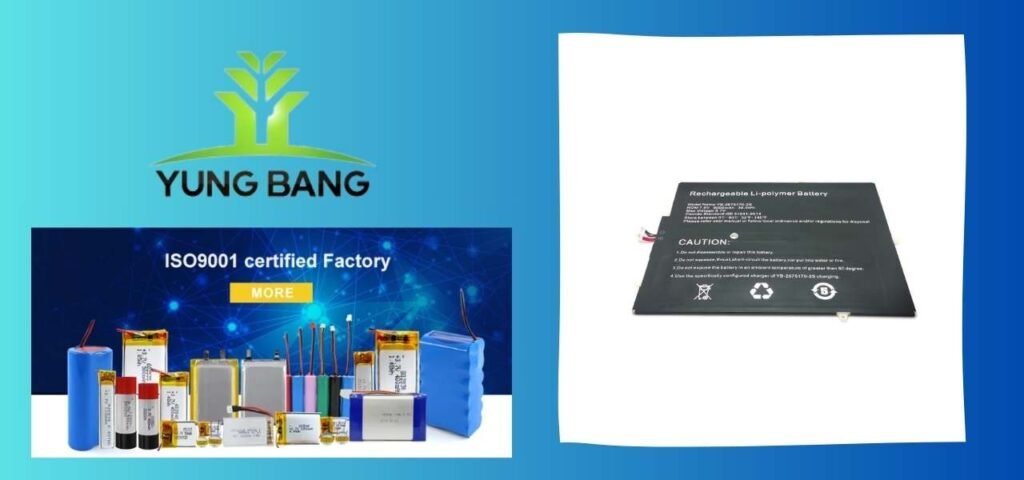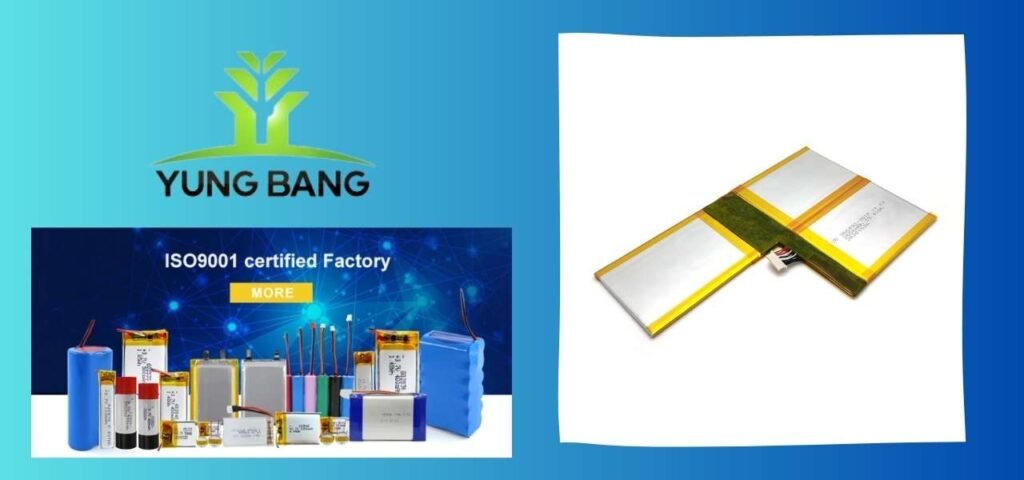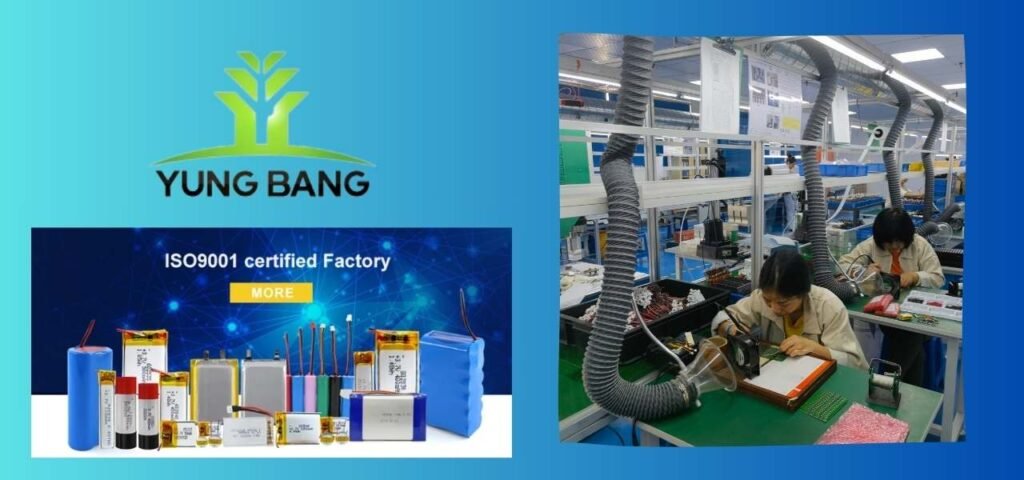1.What is a mobile battery cell?
A “mobile battery cell” typically refers to the individual battery units used in mobile devices such as smartphones, tablets, handheld gaming consoles, etc. These cells are usually lithium-ion or lithium-polymer batteries, known for their lightweight, high energy density, and suitability for applications where battery capacity and size are crucial.
Mobile battery cells are typically characterized by small size and high energy density to meet the requirements of mobile devices for compactness and lightweight. They usually have a certain battery capacity and provide stable power supply to support the normal operation of devices.
The capacity of mobile battery cells is measured in milliampere-hours (mAh) or ampere-hours (Ah), indicating the amount of current the battery can supply and the duration of use. Larger capacity cells generally offer longer usage times but are also relatively larger and heavier.

2.Types of mobile battery cells
The types of mobile battery cells mainly depend on their chemical composition and structure. Here are several common types of mobile battery cells:
Lithium-ion batteries (Li-ion): Lithium-ion batteries are one of the most common types, known for their high energy density, lightweight, and small size. They are suitable for various mobile devices such as smartphones, tablets, laptops, etc.
Lithium polymer batteries (LiPo): Similar to lithium-ion batteries but typically thinner and lighter. Due to their flexibility and malleability, lithium polymer batteries are often used in devices with special shapes or limited space, such as handheld gaming consoles, smartwatches, etc.
Nickel-metal hydride batteries (NiMH): Although less common in mobile devices, some devices still use nickel-metal hydride batteries, especially older phones and electronic devices. NiMH batteries generally have lower energy density and larger size but are relatively cheaper and environmentally friendly.
Nickel-cadmium batteries (NiCd): Similar to NiMH batteries, nickel-cadmium batteries are an older battery technology less commonly used in modern mobile devices. Due to environmental and health concerns associated with cadmium, NiCd batteries are gradually being replaced by lithium-ion batteries.
3.Mobile battery cell capacity
The capacity of mobile battery cells is typically measured in milliampere-hours (mAh). The battery capacity of mobile devices can range from a few hundred to several thousand milliampere-hours, depending on the device’s power consumption requirements, size, and usage scenarios. Here are several common capacities:
1000mAh
1500mAh
2000mAh
2500mAh
3000mAh
3500mAh
4000mAh
4500mAh
5000mAh
With technological advancements and improvements in battery materials, the battery capacity of mobile devices continues to increase to meet users’ demands for longer battery life. Larger capacity batteries generally offer longer usage times but also increase the device’s weight and size. Therefore, when choosing mobile devices, users can select the appropriate battery capacity based on their usage habits and needs.
4.Mobile battery cell charging methods
The charging methods of mobile battery cells typically depend on the battery type and device design and manufacturing. Here are several common charging methods for mobile battery cells:
Constant current charging: Constant current charging is one of the most common charging methods, where the battery is charged by maintaining a constant current until the battery voltage reaches a preset value. This charging method is suitable for most lithium-ion batteries and lithium-polymer batteries, effectively controlling the charging speed and status.
Constant voltage charging: Constant voltage charging is another common charging method, where the battery is charged by maintaining a constant voltage until the battery current decreases to a preset value. This charging method is usually used in the charging end stage to avoid overcharging the battery.
Fast charging: Fast charging is a rapid charging technology for high-capacity batteries, typically using higher voltage and current to accelerate the charging speed. This charging method can fully charge the battery in a short time, improving user efficiency, but may also affect battery life.
Wireless charging: Wireless charging is a charging method that does not require a charging cable to connect the device. It usually uses inductive charging or magnetic resonance charging technology. Users only need to place the device on a wireless charger for charging, which is convenient and quick.
Solar charging: Solar charging is a charging method that uses solar energy to charge the battery. It usually collects solar energy through solar panels and converts it into electricity for charging. This charging method is suitable for outdoor use or situations where access to power sources is unavailable.
The choice of charging method depends on the device’s design and manufacturing, as well as the user’s preferences and requirements. When designing and manufacturing mobile devices, manufacturers need to consider factors such as battery type, charging efficiency, safety, and user experience to provide reliable and convenient charging solutions.

5.Differences between mobile phone batteries and tablet batteries
Mobile phone batteries and tablet batteries have similarities in some aspects but also have differences. Here are the main differences between them:
Capacity and size:
Mobile phone batteries are typically smaller than tablet batteries because the size of the phone limits the battery’s size. The capacity of mobile phone batteries is generally smaller, usually ranging from 1000mAh to 5000mAh, depending on the phone model and manufacturer.
Tablet batteries, due to the larger device size, can accommodate larger capacity batteries. The capacity of tablet batteries usually ranges from 3000mAh to 10000mAh, or even higher, to meet the device’s extended usage requirements.
Battery life:
Due to the relatively small capacity, mobile phone batteries often require frequent charging, leading to potentially shorter battery life cycles. Additionally, frequent charging and discharging habits may further shorten the battery’s lifespan.
Tablet batteries, with larger capacities, typically have longer battery life cycles. Since tablets are often used for longer periods, the battery may experience less frequent charging and discharging cycles.
Power requirements:
Mobile phones generally have more power requirements because they integrate functions such as calling, communication, cameras, sensors, and have smaller screens. This means that mobile phone batteries need to be recharged more frequently and may require fast charging technology to meet users’ needs.
Tablets are typically used for longer periods for activities such as watching videos, gaming, etc. While they have larger battery capacities, they may not experience as frequent charging and discharging cycles as mobile phones.
Charging interfaces:
Due to size constraints, mobile phones typically use smaller charging interfaces such as Micro USB, USB-C, or Lightning. These interfaces are designed for portability and ease of connection.
Tablets often use USB-C interfaces or dedicated charging ports. Since tablets have larger sizes, they can accommodate more interfaces, making it easier to charge and connect external devices.
6.Differences between mobile phone batteries and laptop batteries
Mobile phone batteries and laptop batteries have significant differences in many aspects. Here are the main differences between them:
Capacity and size:
Mobile phone batteries are usually smaller to fit the phone’s compact size. Their capacity generally ranges from several hundred to several thousand milliampere-hours (mAh), depending on the phone model and manufacturer.
Laptop batteries are larger to meet the higher power requirements and longer usage times of laptops. Laptop battery capacities typically range from several thousand to tens of thousands of milliampere-hours (mAh).
Battery types:
Mobile phone batteries often use lithium-ion or lithium-polymer batteries due to their high energy density and small size, suitable for mobile devices’ compact designs.
Laptop batteries primarily use lithium-ion batteries, although some high-end laptops may use larger capacity lithium polymer or lithium iron phosphate batteries.
Power requirements:
Mobile phones generally have lower power requirements as they are primarily used for communication, social media, web browsing, etc. Therefore, mobile phone batteries are designed for low power consumption but may require frequent charging.
Laptops have higher power requirements as they are used for more complex and power-intensive tasks such as video editing, gaming, software development, etc. Therefore, laptop batteries have larger capacities to support longer usage times.
Charging interfaces:
Mobile phone batteries usually use small charging interfaces like Micro USB, USB-C, or Lightning to accommodate the phone’s compact size and portability.
Laptops typically use dedicated AC adapters for charging, providing higher power outputs for faster charging of laptop batteries.
Charging speed:
Mobile phone batteries often support fast charging technology, allowing them to charge quickly in a short time to meet users’ needs.
Laptop batteries generally take longer to fully charge due to their larger capacities and slower charging speeds.
7.Differences between Li-ion and Li-Po mobile battery cells
Chemical composition:
Lithium-ion batteries (Li-ion): Lithium-ion batteries typically use lithium ions as the electrolyte. They use carbon as the negative electrode (anode) and metal oxides as the positive electrode (cathode).
Lithium polymer batteries (Li-Po): Lithium polymer batteries use a polymer gel electrolyte instead of a liquid. They use materials similar to lithium-ion batteries, but the different electrolyte allows lithium polymer batteries to be more flexible in shape and size.
Battery structure:
Lithium-ion batteries (Li-ion): Lithium-ion batteries typically have larger sizes as they need to accommodate liquid electrolytes. Their design and structure are relatively traditional, suitable for batteries with regular shapes.
Lithium polymer batteries (Li-Po): Due to the use of solid polymer electrolytes, lithium polymer batteries can be thinner, lighter, and adopt more flexible shapes and sizes. This makes lithium polymer batteries more advantageous in some special applications, such as curved screens, handheld devices, etc.
Safety:
Lithium-ion batteries (Li-ion): Due to the use of liquid electrolytes, lithium-ion batteries may have a higher risk of thermal runaway in extreme conditions, leading to fire or explosion risks. Therefore, lithium-ion batteries usually require some safety measures to prevent overcharging, over-discharging, etc.
Lithium polymer batteries (Li-Po): Lithium polymer batteries use solid-state polymer electrolytes, making them relatively safer, and their flexible construction allows for safer shapes and sizes.

8.Customizing mobile battery cells
Requirement analysis: First, determine your needs and requirements. Consider factors such as battery capacity, size, voltage, charge/discharge rate, service life, etc., and define your customization goals.
Select battery type: Based on your requirements, choose the appropriate battery type. Common types of mobile battery cells include lithium-ion batteries (Li-ion), lithium polymer batteries (Li-Po), etc.
Design specifications: Based on your needs and the selected battery type, design the battery specifications. This includes determining the battery’s size, capacity, voltage, etc., parameters.
Material selection: Choose suitable battery materials, including anode, cathode materials, electrolyte, etc. The choice of these materials will affect the battery’s performance and characteristics.
Manufacturing process: Determine the battery’s manufacturing process and workflow. This includes processes such as assembly, packaging, charging, testing, etc.
Safety considerations: Ensure the battery’s safety. Consider implementing safety measures such as overcharging, over-discharging, short circuit protection, etc., to ensure the battery’s safe use.
Testing and certification: Conduct testing and certification of the battery before production. Ensure that the battery meets relevant standards and regulations and has good quality and performance.
Production and quality control: Produce the battery according to the design specifications and manufacturing process, and perform quality control. Ensure that the battery’s quality and performance meet the requirements.
Packaging and delivery: Complete the battery’s packaging and labeling, and deliver according to customer requirements.
9.Yungbang battery factory introduction
Guangdong Yungbang New Energy Co., Ltd. was established in June 2013. Currently, we have a factory covering an area of 18,000 square meters and employ over 500 staff members. We possess multiple independent intellectual property rights and are recognized as a national high-tech enterprise specializing in the research, development, design, production, and sales of lithium-ion battery cells and battery packs.
Our lithium battery products are widely used in various electronic products, including mobile phones, intercoms, POS machines, security-related devices, remote sensing mapping, Bluetooth speakers, vehicle networking/internet of things products, mobile power supplies/back-up power supplies, tablets/laptops, AGV robots, power tools, electric bicycles, electric tricycles, electric quadricycles, and more.
Since our establishment, our products have passed UL, CE, FCC, UN, PSE, CQC certifications, and all series of products comply with EU RoHS standards. Our products are globally insured by Ping An Insurance Company of China. Through the unremitting efforts of all our employees, our products have been well received in more than 30 countries and regions worldwide, including Europe, America, and Japan.

